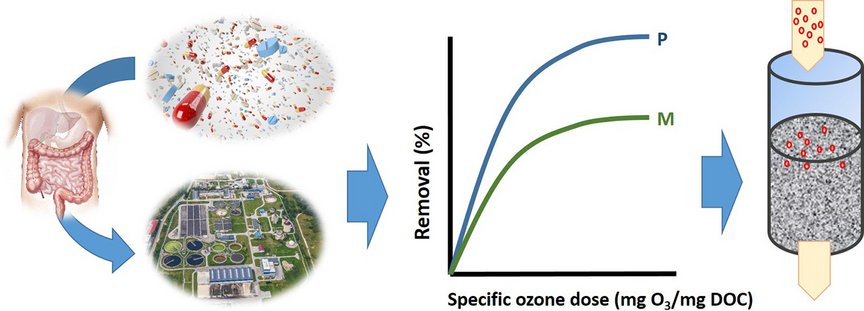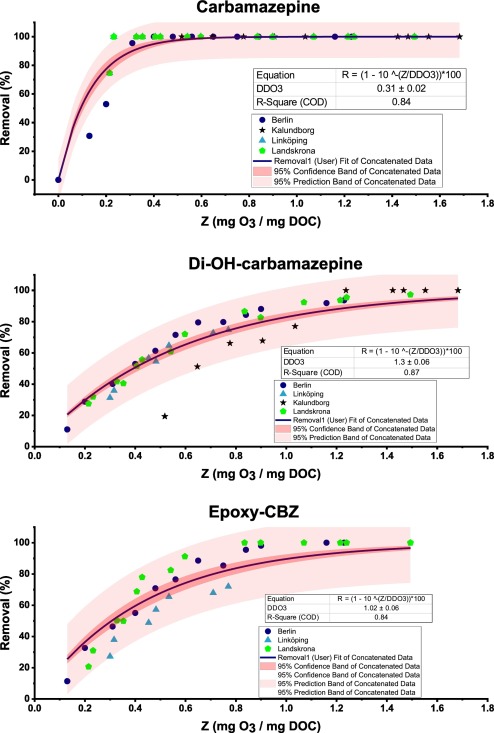Kharel, Suman; Stapf, Michael; Miehe, Ulf; Ekblad, Maja; Cimbritz, Michael; Falås, Per; Nilsson, Josefine; Sehlén, Robert; Bregendahl, Jeppe; Bester, Kai
Science of the Total Environment, 759, 143989, 2021.
doi.org/10.1016/j.scitotenv.2020.143989
Abstract:
Advanced treatment technologies for the removal of pharmaceuticals and other organic micropollutants in WWTPs primarily target the removal of parent compounds. Nevertheless, the removal of metabolites originating from human- or microbial metabolism during biological treatment needs comparable consideration, as some of them might be present in high concentrations and contribute to toxicity.
This study was conducted to elucidate the removal of human and microbial metabolites of pharmaceuticals as a function of the specific ozone dose. Ozonation was performed on four sites with two pilot- and two full-scale plants operated downstream of conventional activated sludge plants. The ozone reactivity of all metabolites (expressed as the ozone dose to remove 90% of the compound/decadic ozone dose) was lower than those of their parent compounds. The decadic ozone dose was 1.0, 1.3 and 1.1 mg O3/mg DOC for Epoxy-carbamazepine, Di-OH-carbamazepine and N-Desmethyl tramadol, respectively.
20–40% of the remaining metabolites were removed in a polishing sand/BAC-filter (biological activated carbon). Similar removal was observed for Epoxy-carbamazepine, Di-OH-carbamazepine and Hydroxy-diclofenac in a constructed wetland. However, the sand/anthracite filter had no effect. All four metabolites were removed in a GAC (granulated activated carbon) filter.
Graphical abstract:


Fig. 2. Removal of Carbamazepine and its metabolite Di-OH-carbamazepine and Epoxy-carbamazepine as a function of specific ozone dose (z). DDO3: decadic ozone dose.